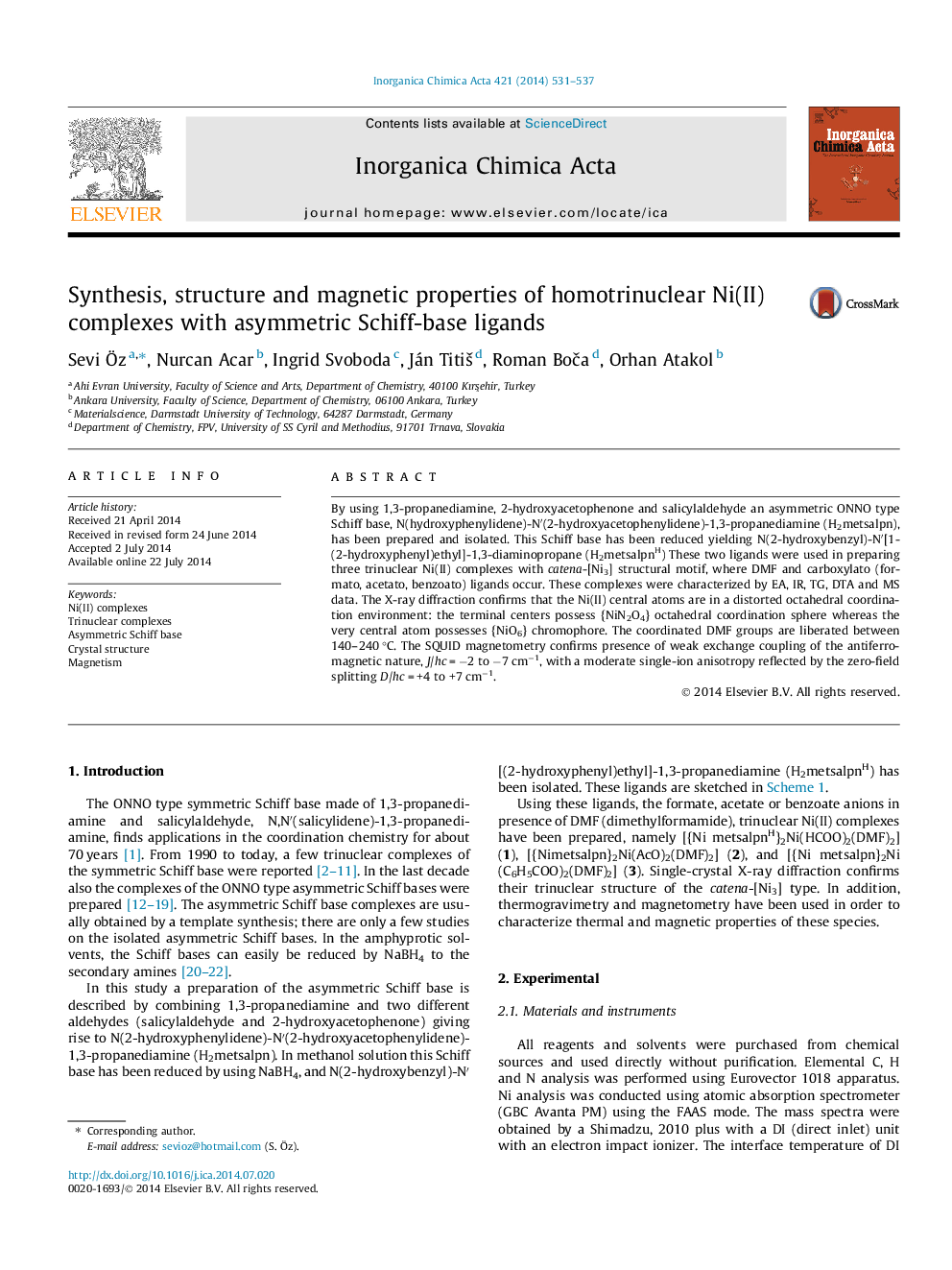| Article ID | Journal | Published Year | Pages | File Type |
|---|---|---|---|---|
| 1308153 | Inorganica Chimica Acta | 2014 | 7 Pages |
•Asymmetric ONNO type Schiff bases were synthesized and characterized.•Homotrinuclear NiII–NiII–NiII complexes were synthesized with ONNO type asymmetrical ligands and characterized.•The magnetic susceptibility and magnetizations of these complexes were measured and explained.•NiII–NiII–NiII complexes were investigated using thermogravimetry and observed strong exothermic decomposition.
By using 1,3-propanediamine, 2-hydroxyacetophenone and salicylaldehyde an asymmetric ONNO type Schiff base, N(hydroxyphenylidene)-N′(2-hydroxyacetophenylidene)-1,3-propanediamine (H2metsalpn), has been prepared and isolated. This Schiff base has been reduced yielding N(2-hydroxybenzyl)-N′[1-(2-hydroxyphenyl)ethyl]-1,3-diaminopropane (H2metsalpnH) These two ligands were used in preparing three trinuclear Ni(II) complexes with catena-[Ni3] structural motif, where DMF and carboxylato (formato, acetato, benzoato) ligands occur. These complexes were characterized by EA, IR, TG, DTA and MS data. The X-ray diffraction confirms that the Ni(II) central atoms are in a distorted octahedral coordination environment: the terminal centers possess {NiN2O4} octahedral coordination sphere whereas the very central atom possesses {NiO6} chromophore. The coordinated DMF groups are liberated between 140–240 °C. The SQUID magnetometry confirms presence of weak exchange coupling of the antiferromagnetic nature, J/hc = −2 to −7 cm−1, with a moderate single-ion anisotropy reflected by the zero-field splitting D/hc = +4 to +7 cm−1.
Graphical abstractAsymmetric Schiff-base and its reduced counterpart have been complexes with Ni(II) ions in presence of formato, acetato, and benzoato ions in DMF yielding three catena-[Ni3] complexes whose structures were determined by X-ray diffraction. The SQUID magnetic data confirm presence of the weak exchange interaction of an antiferromagnetic nature, J/hc = −2 to −7 cm−1, along with the moderate zero-field splitting D/hc = +4 to +7 cm−1.Figure optionsDownload full-size imageDownload as PowerPoint slide
